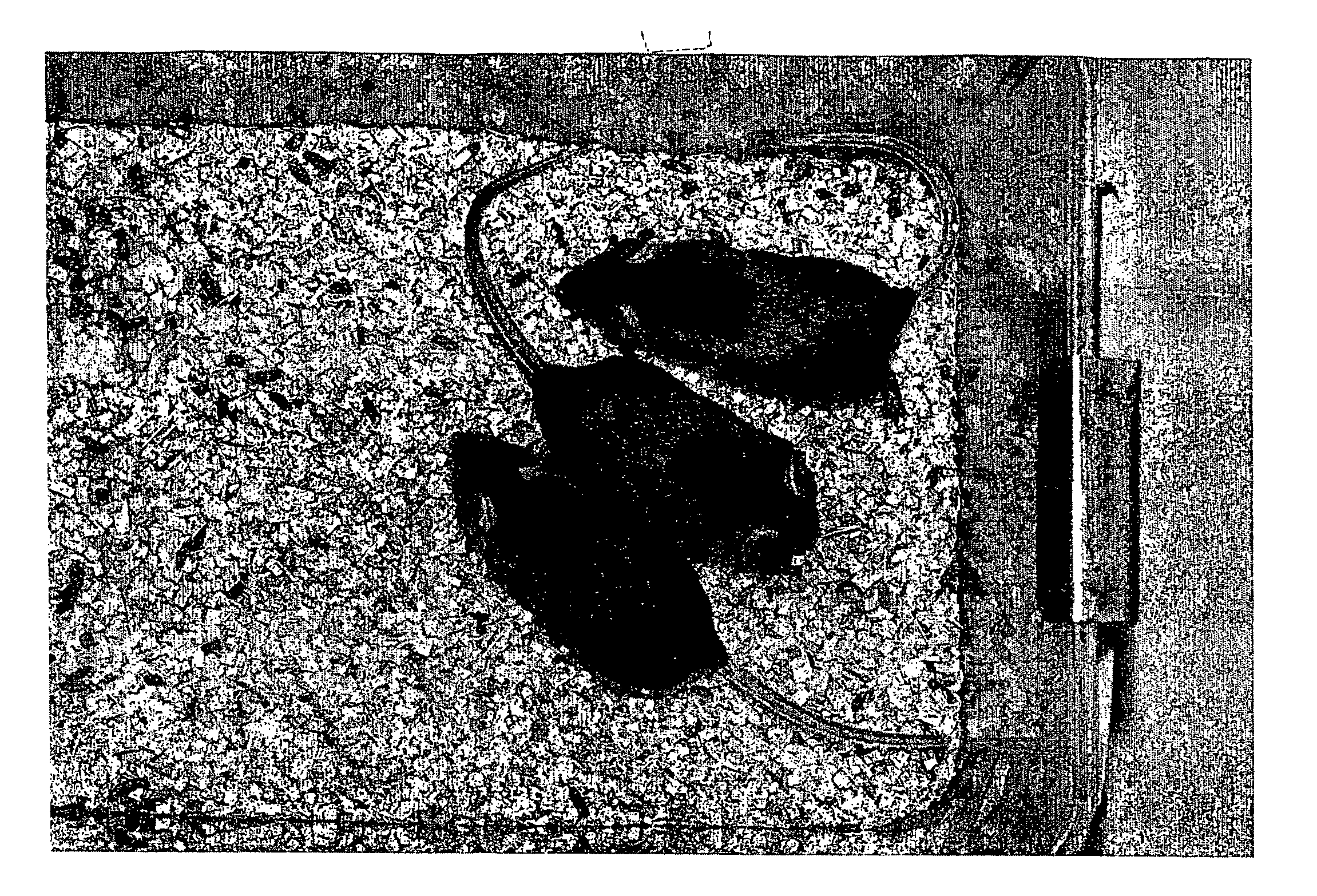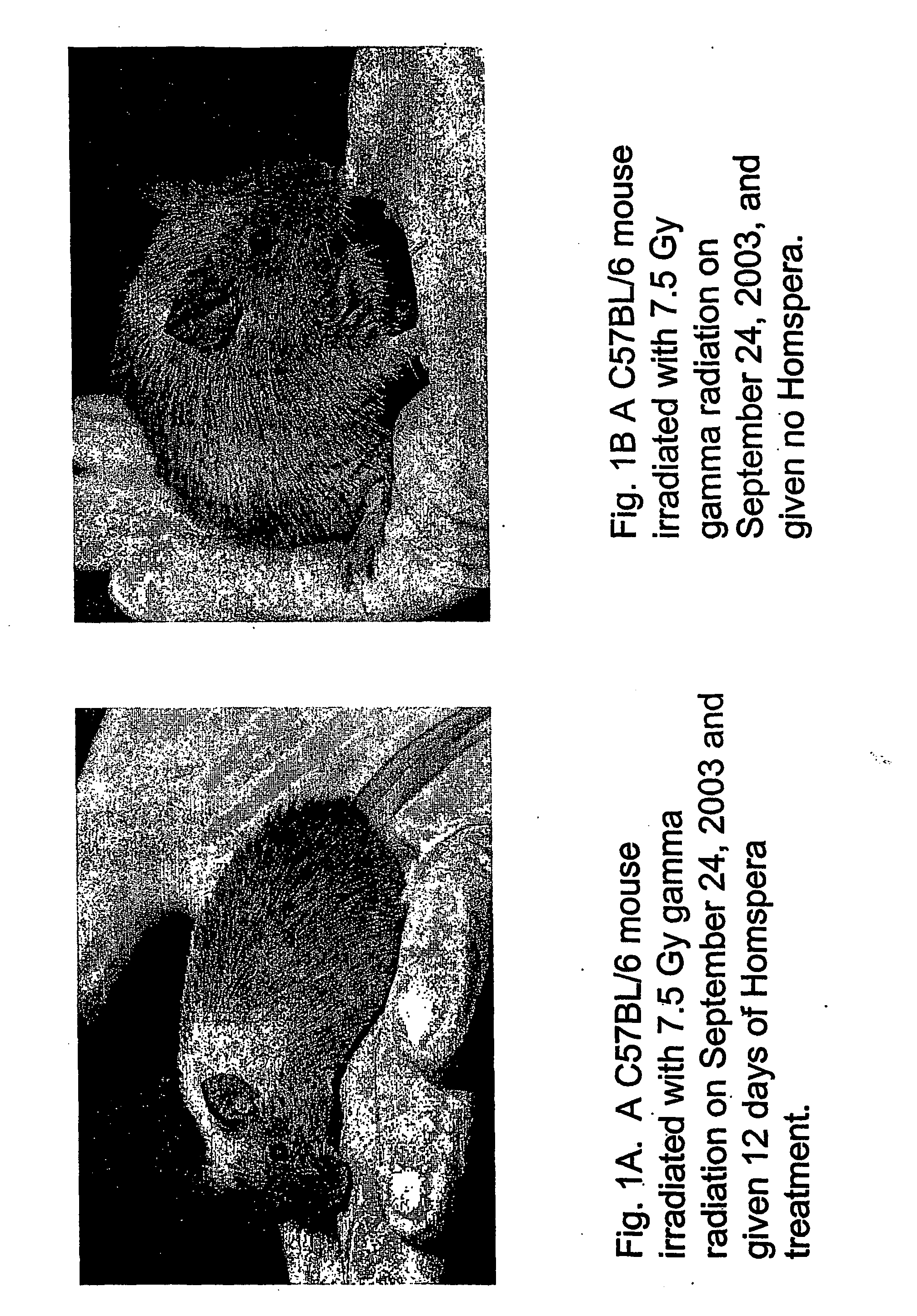Stimulation of hair regrowth
a hair growth and stimulation technology, applied in the field of hair growth, can solve the problems of increasing the frequency of cycles at the expense of the quality of hair and subsequently of the amoun
- Summary
- Abstract
- Description
- Claims
- Application Information
AI Technical Summary
Problems solved by technology
Method used
Image
Examples
example 1
[0025] A C57BL / 6 mouse was irradiated with 7.5 Gy gamma radiation on Sep. 24, 2003 and given 12 days of [Sar, Met(02)11]-substance P (Homspera™) treatment. New growth (black) hair was observed at the rear of the mouse's back, See FIG. 1A. As a control, a C57BL / was 6 mouse irradiated with 7.5 Gy gamma radiation on Sep. 24, 2003 and given no Homspera™ treatment. No new growth hair was observed. See FIG. 1B.
example 2
[0026] C57BL / 6 mice were given a Cobalt 60 gamma radiation treatment on Sep. 24, 2002 of either 10 Gy, 7.5 Gy, 5 Gy, or 2.5 Gy. The 10 Gy mice died at an average of 11.3 days after the radiation exposure. All of the other mice in the other radiation exposure groups survived at least until Dec. 18, 2002. At 75 days after the initial radiation exposure, the 5 Gy and 2.5 Gy mice were administered a 10 Gy dose of Cobalt 60 gamma radiation. On the day of the second 10 Gy radiation exposure, it was noted that the 5 Gy and 2.5 Gy mice had hair loss over approximately 20% of their body with the most significant hair loss in their leg areas and around their ears. Half of the 5 Gy and 2.5 Gy (N=10) mice were administered a one micromolar Homspera™ dose by aerosol for 15 min / day beginning the day of the 10 Gy radiation exposure. The Homspera™ treated mice have restored their hair loss over the 9 days of Homspera™ treatment.
example 3
[0027] C57BL / 6 mice were divided into three groups. Groups 1 and 2 underwent a lethal dose of gammna radiation (7.75 Gy) on July 11th. Group 1 mice were treated with Homspera™ (50 micromolar for 35 days and then a maintenance dose of 10 micromolar until +90 days), and then they were killed at +90 days post-lethal radiation (October 9th). Their immune system status was normal compared to control mice (Group 3) that had not been treated with radiation and had not been treated with Homspera™. Group 2 mice received Homspera™ treatment for 35 days after radiation, and then the Homspera™ treatment was completely stopped.
[0028] There are two sets of pictures of the Group 1 and Group 2 mice: one set of pictures taken on September 5th at Day +56 after radiation (FIGS. 2A and 2B), and the other on October 9th at Day +90 after radiation (FIGS. 2C and 2D). Both groups retained their hair.
PUM
| Property | Measurement | Unit |
|---|---|---|
| bioactive | aaaaa | aaaaa |
| concentration | aaaaa | aaaaa |
| area | aaaaa | aaaaa |
Abstract
Description
Claims
Application Information
 Login to View More
Login to View More - R&D
- Intellectual Property
- Life Sciences
- Materials
- Tech Scout
- Unparalleled Data Quality
- Higher Quality Content
- 60% Fewer Hallucinations
Browse by: Latest US Patents, China's latest patents, Technical Efficacy Thesaurus, Application Domain, Technology Topic, Popular Technical Reports.
© 2025 PatSnap. All rights reserved.Legal|Privacy policy|Modern Slavery Act Transparency Statement|Sitemap|About US| Contact US: help@patsnap.com



